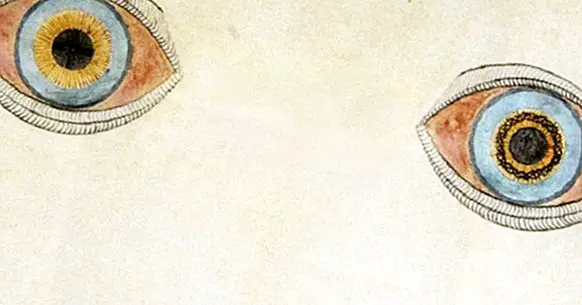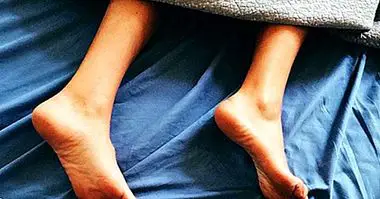Grisi siknis: symptoms and causes of this cultural syndrome
Cultural syndromes or linked to culture are disorders that have been identified exclusively in a specific society. Some of the most well-known cultural syndromes are Koro, which occurs in Southeast Asia, and Amok, typical of Indonesia and the Pacific.
In this article we will talk about the causes and symptoms of grisi siknis, a syndrome linked to culture that occurs between the Miskitos, natives of Honduras and Nicaragua. We will also describe some similar disorders that occur in other cultures.
- Maybe you're interested: "Hikikomori: young people permanently locked in their room"
What is grayi siknis?
Grisi Siknis is a specific cultural syndrome of the Miskito society , an ethnic group of Central America . The name is probably derived from the English words "crazy sickness"; in that case it could be translated as "madness disease". It is also known as "grisi munaia", "Nil siknis" and "Chipil siknis". This disorder was described by Philip A. Dennis in 1981.
It occurs mainly in adolescent women between 15 and 18 years . Although Western psychology and psychiatry have attributed the occurrence of grisi siknis episodes to emotional distress and stress, traditional Miskito explanations claim that it is an experience of possession by evil spirits or sorcerers.
This esoteric account of the nature of the syndrome is fueled by the fact that medicine and other Western treatments do not seem effective in resolving the symptoms of grisi siknis. In contrast, the traditional and herbal remedies of the Miskito healers are effective in dealing with the symptoms, perhaps by suggestion and placebo effect.
One of the most peculiar characteristics of Grisi Siknis is its contagious nature, which causes epidemics to occur . For example, outbreaks of grisi siknis were reported in March 2009, affecting many young people in the municipalities of Puerto Cabezas and Siuna, in Nicaragua. These epidemics happened shortly after Hurricane Felix, which caused havoc along the coast of Honduras and Nicaragua.
Symptoms of this disorder
Episodes of Grisi Siknis are preceded by physical and psychological symptoms such as anxiety, anger, irrational fear, headache, dizziness and nausea .
The onset of the attack coincides with the loss of consciousness that causes the person to fall to the ground. Then begins to run, plunged into a state of dissociation and lack of control of behavior.
During the grisi siknis crisis it is common for affected people to carry out aggressive behavior against themselves or against invisible aggressors hallucination product s ; Those who have suffered episodes say they see spirits or demons that come to look for them, sometimes to rape them or have sex with them.
There is a great power of suggestion in this syndrome, partly because of the atmosphere of esotericism that is generated in the crises and that recalls the classic cases of Folie à Deux. It is also common for people affected by grisi siknis to say the name of the following who presumably will suffer it, although not necessarily correct. There are Miskito stories that tell supernatural facts happened during episodes of this syndrome, as victims who speak in unknown languages or who vomit hair, spiders or coins.
The gray siknis It can last several months, even a year, if it is not treated . During this period there are usually recurrent episodes with symptoms such as those described in the previous paragraphs.
- Related article: "Hallucinations: definition, causes, and symptoms"
Causes and explanations
According to the DSM-IV-TR manual, grisi siknis is a psychological disorder that occurs due to stress, emotional shock and despair ; In this sense, this syndrome has been linked to the dissociative leak, as is the case with Amok syndrome, another well-known cultural disorder. However, grisi siknis has been little studied and therefore its causes are not entirely clear.
The Miskitos attribute Grisi Siknis to a destabilization in the spirit world, caused by the appearance of epidemic outbreaks or the action of dark sorcerers. These factors would lead to the possession of young girls by spectra.
As we have seen, a possible explanation for the peculiar fact that grisi siknis is contagious is the suggestion; thus, the appearance of this syndrome in several people at once could be influenced by contact with other cases of Grisi Siknis . Seen in this way, the syndrome would have certain similarities with the shared psychotic disorder, better known as Folie à Deux.
Similar cultural syndromes
The symptoms of anxiety, physical discomfort and loss of control are very common in a large number of disorders, including those that are specific to certain cultures. As in Grisi Siknis, in many cases these syndromes have traditionally been attributed to the possession of spirits.
1. Amok or kill elap
Alteration detected in males from Malaysia characterized by appearance of a dissociative episode during which aggressive behaviors occur . It is related to psychosis. After the attack of amok the person does not remember what happened.
There are other cultural syndromes with symptoms very similar to those of amok and grisi siknis in different cultures, such as cafard, berserk, fighting evil and iich'aa, identified in Polynesia, Scandinavia, Puerto Rico and the Navajo Indians, respectively.
2. Pibloktoq or Arctic hysteria
The pibloktoq occurs among the Inuit of Greenland. It usually consists of a dissociative episode of about 30 minutes that occurs after a period of agitation, irritability or low mood. The person behaves aggressively and uninhibited , being able for example to take off all the clothes, shout obscene words or eat stools.
3. Windigo or witiko
The windigo is a mythological being of North America to which human and bestial characteristics are attributed. As a disorder, the windigo is related to delirious experiences of possession who have a compulsive desire to eat human flesh. Currently the existence of this cultural syndrome is very questioned as such.
4. Nervous attack
This name is given to episodes of loss of control with cries, cries, tremors and aggression that occur in some Latin American and Mediterranean cultures. It differs from panic attacks in the fact that the symptoms occur spontaneously, without a trigger and without feelings of fear.
5. Bouffée delirious
The delirious bouffée (in French, "delirious breath") it's a type of psychotic outbreak which is characterized by psychomotor agitation, violence, confusion and visual or auditory hallucinations. It is typical of Haiti and West Africa.
6. Tsar
Dissociative episodes with screaming, crying, laughter and uncontrolled songs, as well as self-harm, attributed to experiences of spirit possession. In African countries where it has been identified, such as Ethiopia, Sudan, Egypt and Somalia, it is not considered a pathology .
7. Illness of the spirits
In some Native American societies a syndrome has been described consisting of an intense concern for death and deceased persons, along with various physical and psychological symptoms: anxiety, weakness, loss of appetite, dizziness, confusion, nightmares, hallucinations, etc.
8. Hsieh-ping
The hsieh-ping, a cultural syndrome detected in Taiwan , it is defined as a brief trance state during which the person believes that he is possessed by ancestral spirits who try to communicate with family members. Symptoms include disorientation and hallucinations.
9. Madness
According to the psychiatric manual DSM-IV, the term "madness" is used in Latin America to refer to a type of chronic psychosis They include symptoms such as interpersonal difficulties, agitation, hallucinations, incoherence, impulsivity and aggression.
Bibliographic references:
- American Psychiatric Association. Task Force on DSM-IV. (2000). Diagnostic and Statistical Manual of Mental Disorders, 4th Edition Text Revision. Washington, DC: American Psychiatric Association.
- Barrett, B. (1997). Herbs and healing on Nicaragua's Atlantic Coast. American Botanical Council, 41: 35-48.
- Dennis, P. A. (1981). Part Three: Grisi Siknis Among the Miskito. Medical Anthropology, 5 (4): 445-505.



















